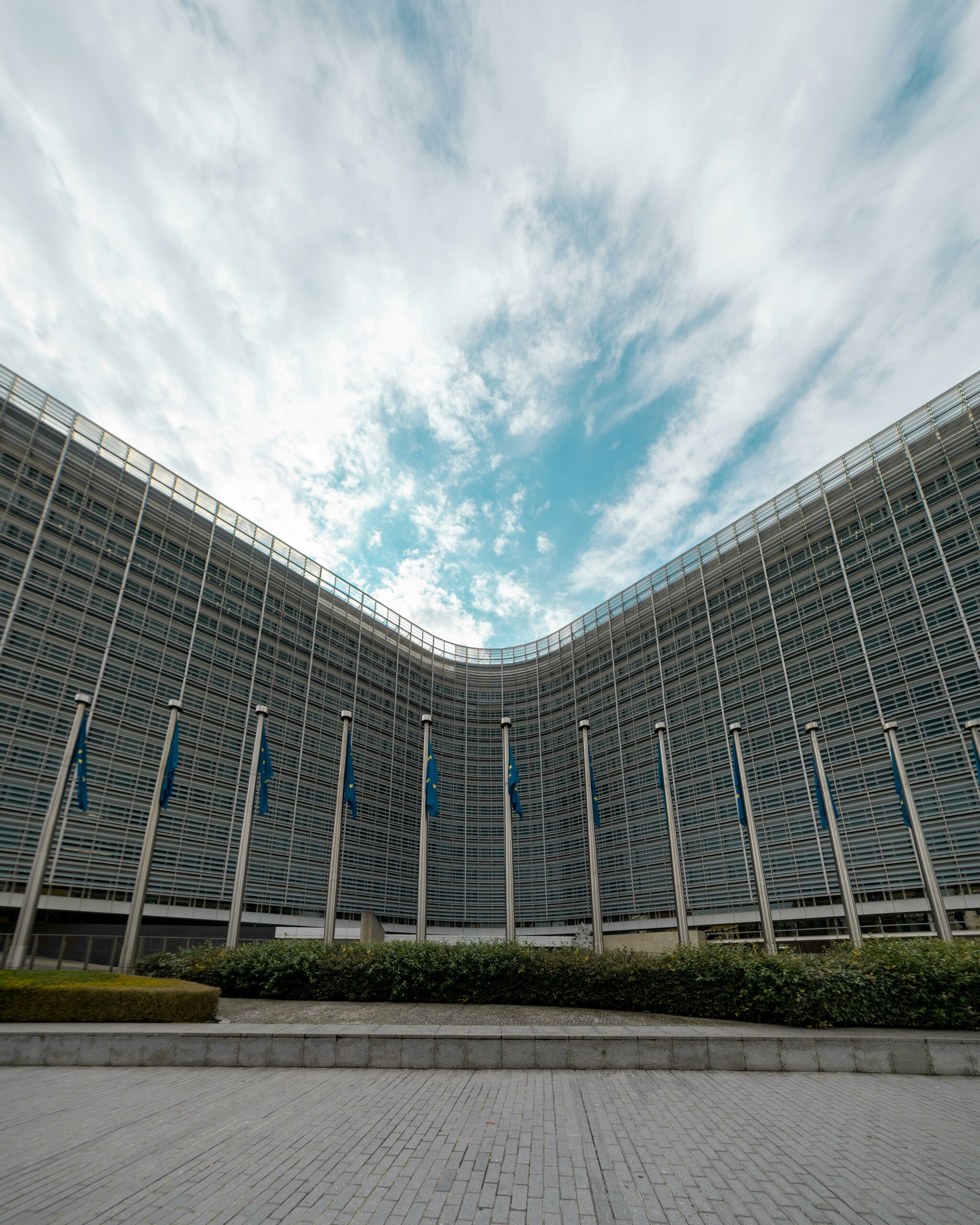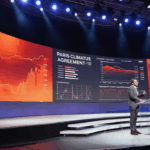Ksapa is leading a working group of 12 international investment funds and investment companies to strengthen their consideration of human rights issues. An opportunity to come back and clarify the EU’s DNSH principle.Demonstrating that investments “do no significant harm” is a cornerstone of the EU’s sustainable finance framework. In practice however, determining how to apply this principle can be complex for investors. Regulations such as SFDR, the Taxonomy for sustainable activities and the Benchmark Regulation all refer to it with different nuances. How can investors demonstrate that their investments are doing no harm? What do they need to assess, measure, and with what type of data and indicators?
Why Green Investments should “do no harm”?
The whole point of EU efforts behind the series of regulatory initiatives is essentially to “shift the trillions” and support green transition of the EU economy. This is primarily and foremost, about decarbonizing the EU economy. Making it much more energy efficient. Making it more circular. In a simple word: greener.
We know too well the challenges of the above in concrete terms. We have 25+ years of expertise working on human rights. We have therefore been at the forefront witnessing the human right abuses coming with a greener economy. Wind farm projects erecting wind turbines with poor safety and questionable living conditions for workers. Green EV batteries made up using minerals collected early mornings by little children climbing the mine sites before security guards would start controlling the area. Public transport infrastructures made up with migrant workers paid below minimum wage in Switzerland or Finland. We are also at the forefront of programs engaging smallholders where we see how insubstantial Net Zero commitments can easily translate into risks of deforestation nurturing poverty in rural areas. There are indeed many reasons to be suspicious and vigilant, ensuring “green” is not hiding underlying human right abuses.
EU regulators introduced the principle of ‘Do No Significant Harm’ (DNSH) to prevent investment processes leading to cases similar to the illustrative examples provided above. DNSH is here to help ensure that companies doing well on one environmental aspect also meet minimum baseline standards across others. For example, Net Zero targets and metrics used to assess investments shall not exclusively focus on the carbon emitted by a company. They shall also consider other important environmental data such as good water, waste and biodiversity management. They are also expected to ensure no human right violation is at risk of occurring using the working capital dedicated to achieving the Net Zero target.
How EU regulations refer to “do no harm”
1) Sustainable Finance Disclosure Regulation
According to article 2(17), investors claiming they have made a ‘sustainable investment’ need to demonstrate that:
- it is an investment in an economic activity that contributes to an environmental or social objective,
- the investment does not significantly harm any social or environmental objectives and
- the investee companies follow good governance practices.
Investors need to consider DNSH in the context of the overall objectives of their investment product. Key data to prove a sustainable investment’s compliance with Article 2(17) includes:
- Contribution to an environmental or social objective: Investors need metrics or targets that demonstrate the performance of the investment product with regards to this objective. For example, if a product intends to reduce carbon, the metric may be a combination of total carbon avoided by the investee companies, a carbon intensity metric or efforts taken through enabling technology or decarbonizing practices to reduce carbon. There is no singular metric that investors should use across all products. The data should correspond to the objective of the fund and can therefore vary from product to product. EFRAG ESRS standards will likely become a good source of metrics though, ensuring comparability and compliance with other EU regulatory frameworks
- DNSH to any social or environmental objectives: Investors need to explain the Principle Adverse Impacts (PAI) potentially coming with an investment.
- Conducting a materiality assessment, or using a standard providing a basic materiality overview are good options to provide transparency on the identification of PAI. It is up to the investor to set acceptable tolerances against specific indicators for PAI set out in Annex I of the February 2021 RTS.
- The investor is obviously accountable when it comes to what can be considered “acceptable”. Double materiality can help in this regard. Using the OECD Due Diligence Guideline on Responsible Business Conduct is also a good framework to base and calibrate what can be considered acceptable or not.
- Indicators for PAI are a set of pre-defined mandatory and optional data points such as carbon footprint, water and waste metrics and human rights policies. An investor could also use this data to explain how an investment aims to improve over time, or choose a particular threshold or tolerance level from which divestment would occur against certain indicators.
- Good governance: Investors need to prove that investee companies follow good governance practices, especially with regards to management structures, employee relations, remuneration and tax compliance. As the definition of “good” is not defined in the regulation, investors need to use available data and make subjective assessments.
2) EU Taxonomy for sustainable activities
For an investee company to demonstrate it has either turnover, capex or opex aligned to the Taxonomy, it needs to demonstrate that it substantially contributes to at least one of six environmental objectives and does no harm to any other. The Taxonomy regulation provides clear, sometimes threshold-based, metrics to demonstrate that DNSH is met. Environmental controversies data tends to be used as a proxy to the Taxonomy regulation’s harm indicator, with several limitations leaving investees with nuances to define without guidance:
- Controversies are generally limited to a generic “Yes/No” compliance of a whole company, where nuance can matter. Our clients generally have a more complex portfolio, where they need to identify which portions of a company’s revenue can be impacted, and what threshold may be considered too marginal or too material
- Controversies rarely consider remedial efforts to correct issues, whereas the Taxonomy encourages a go-forward investment approach. The UN Guiding Principles on Business and Human Rights also strongly encourage remedial efforts and can typically apply for investment decisions
- Controversies may not apply the very specific test requirements from the Delegated Acts. For example, a company that invests in renewable energies may be substantially contributing, even if it has a subsidiary that harms the mitigation objective by producing energy above the 270gCO2e/kWh threshold for harm. Whilst one subsidiary is considered harmful, and its revenue cannot be counted, the other is considered substantially contributing and its revenue can be counted.
Help is coming for investors however, as large listed European companies have been starting to self-certify compliance with the DNSH tests since January 2023. Our client investors in such companies are thus complaining about RTS reporting, but still defining practical implementation rules using this information for their very own reporting. However, for those who wish to proxy alignment for non-listed European or International investee companies using estimates, they can do so under “equivalent information”, according to article 16b of the RTS for product-level reporting. The non-EU companies need to have the same approach to climate risk assessment, water and waste management practices as their equivalent EU companies, as seen in corporate sustainability reporting. Where considering a proxy to DNSH, it is important that investors can also see alignment with the principles on which the EU regulations are based: materiality, double materiality, OECD Guidance on Responsible Business Conduct.
3) Paris-Aligned Benchmarks
Under the Benchmark Regulation, Article 19b states that companies included in climate transition indices cannot significantly harm other ESG objectives. This is further clarified in the Delegated Regulation under Article 12(2), which states that “administrators of EU Paris-aligned Benchmarks shall exclude from those benchmarks any companies that are found or estimated by them or by external data providers to significantly harm one or more of the environmental objectives”, with direct reference to the Taxonomy regulation. The same requirements apply to EU Climate Transition Benchmarks under Article 10(2) of the Delegated Regulation since January 2023. There is also guidance on the use of estimates in Article 13(2) of this regulation, which asks that such methodologies are clearly explained and compliant with precautionary principles.
Therefore, the DNSH data used to evaluate Taxonomy-alignment should be used for Paris-aligned Benchmarks. However, benchmark administrators understandably often turn to environmental controversies data for this assessment, as the Taxonomy measures harm at the activity-level and not at the company-level. The Taxonomy regulation is clear though, and companies that do not meet DNSH requirements must be excluded. One approach could be to exclude companies on the basis of environmental controversies, but to ensure that investee companies are at least compliant with the baseline expectations of the Taxonomy.
Conclusion
In conclusion, investors should no longer invest without being mindful of the larger, more holistic sustainability approach of their investment product. It is therefore critical that they ensure to have the right methodology, defining the right priorities, supported by the right data and proxies, to explain their investments through these new regulatory lenses. As more investors are cautious about ‘greenwashing’ claims, taking a robust approach to due diligence on data is essential.
Ksapa has been heavily involved in this discussion since its inception. Through our advocacy activities, Ksapa is among others, driving a collaborative platform enabling investors and investees to work together aligning on concrete principles to lead a ‘Green Transition Free From Forced Labor’. Through our consulting activities, we support a large variety of private banks, large and small fund and asset manager companies, and multilateral and bilateral organizations. Through our programs, we deploy concrete solutions across complex value chains supporting the green transition and ensuring concrete mitigation of environmental and human right risks across supply chains. Ksapa is working with a large number of public and private financial institutions, funds, and asset managers using the following principles ensuring compliance:
- Right methodology: We base DNSH with a robust review of materiality and holistic review of potential PAI. While a lot of approaches generally have a decent understanding of environmental PAI at stake, our approach is best-in-class ensuring a robust understanding of human rights PAI as well
- Right priorities: We define acceptable tolerance and remedial efforts using international standards and robust transparent methodologies to prioritize issues. While some environmental issues can be fairly easily calibrated – for example in view of the Paris Agreement and related sector-based guidelines, our approach is also best-in-class ensuring a robust review of human right priorities and related remediation efforts engaging investors and investees alike
- Right data and proxies: We use a database of 300+ certificates and other evidence to help industrialize data collection and identification of pertinent proxies. We also deploy and employ data science activities to maximize collection and valuation of data already available
We stand at the ready keeping the discussion open on this rapidly evolving field with clients and stakeholders interested as we are, ensuring the green transition is doing no significant harm to people and the planet. Connect with us. Share with us. Work with us!
Author of several books and resources on business, sustainability and responsibility. Working with top decision makers pursuing transformational changes for their organizations, leaders and industries. Working with executives improving resilience and competitiveness of their company and products given their climate and human right business agendas. Connect with Farid Baddache on Twitter at @Fbaddache.






